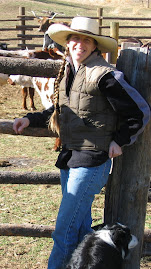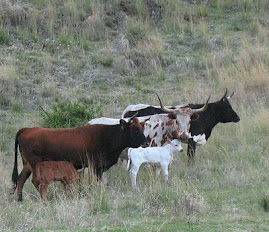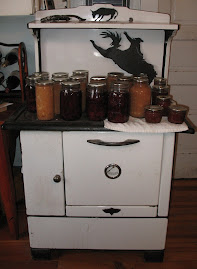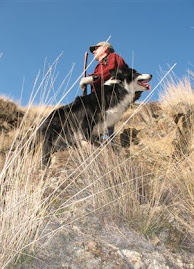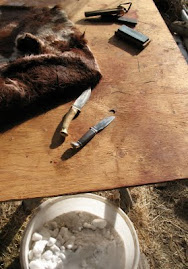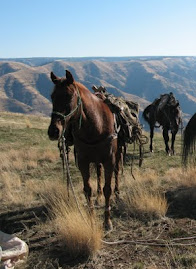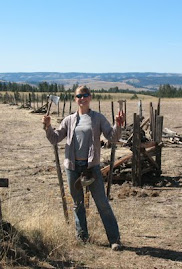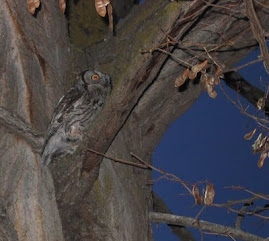I’m sure if I read Betty’s book I’d find something good in there. Betty Fussell is a gourmand. She lives in New York, N.Y. and she believes in steak. Her recent book Raising Steaks: The Life and Times of American Beef, is described by Michael Pollan as an “absorbing journey through the geography of beef.”
But I haven’t read Betty’s book. I’ve only seen part of the meaty note she sent to High Country News in May. This is where Betty shares a few thoughts on red meat, emphasizing that ‘real’ American men, women and children eat steak because it infuses them blood, iron and vitality.
What struck me about this sentiment is the word “steak.” In my book, what ‘real’ men, women and children eat is locally and sustainably grown food. Which in places like Hells Canyon, with an abundance of natural grasses and forages, includes meat. And not just steak.
Steak can be yummy. So can arm roasts, heart, soup bones, liver, rump roasts, tongue, stew meat, etc. To build a food system that supports ranch families and the lands they steward, we must learn to eat and use more of the animal.
Folks who know how to cook a delicious heart or tongue can share those skills and tastes. I can’t remember who showed me how to cook tongue, but I know that boiled and seasoned, sliced thin, it makes awesome sandwiches, with a hearty mustard on homemade bread.
Nowadays, the butcher even asks me if I want the tail. And some of my customers do. So fire up the freezer honey, because it’s about the whole cow.
Recipe for Boiled Beef Tongue
Rinse the tongue and place in a stock pot with water to cover and one teaspoon of salt. Optional: add chopped onion and/or seasonings, such as bay leaf, red or black pepper or pickling spice. Bring to a boil and simmer 2 to 3 hours or until tender, should be able to pierce it with a fork. Rinse in cold water. Peel off the skin. Slice thinly and serve. Good for sandwiches.
Sunday, June 28, 2009
Thursday, June 25, 2009
Lessons Learned
Cherries good. Bean maggots bad.
Here is what you don't do: plant a late cover crop, till it in late, rush to plant your beans and then incubate a superb hatch of bean seed maggots in the cool moist rotting cover crop. This is guaranteed to eliminate beans from your summer harvest. The bean maggots eat the bean sprouts as they emerge from the seed. The happy little buggers took care of every bean seed in the garden. I hope my friends and neighbors have a bumper crop this year, because I will be on the hunt for beans.
Consolation for the demise of the beans came in the bucket of cherries Gabe brought out from Horse Creek. Sweet, dark, juicy delicious organic cherries. The tree is at least 40 years old and enormous. It has survived in the old orchard along the river in spite of drought, pests (including bears), and floods. The birds love it. They usually get the harvest, but this year the salmon season coincided with cherry season and our dedicated fisherman also loves fruit. So I got the bonus of cherries.
Some were splitting from the copious rains of last week. I sorted and saved the most pristine for fresh eating and pitted and froze the rest. These will go into my favorite kind of cherry pie, which is a mix of 1/3 sweet cherries and 2/3 pie cherries. And don't forget cherry smoothies, and plain frozen cherries barely thawed which are a great treat in themselves, especially for little kids. For now I'm practicing self discipline and not reaching into the cherry bowl too often, just when I think of the beans.
Here is what you don't do: plant a late cover crop, till it in late, rush to plant your beans and then incubate a superb hatch of bean seed maggots in the cool moist rotting cover crop. This is guaranteed to eliminate beans from your summer harvest. The bean maggots eat the bean sprouts as they emerge from the seed. The happy little buggers took care of every bean seed in the garden. I hope my friends and neighbors have a bumper crop this year, because I will be on the hunt for beans.
Consolation for the demise of the beans came in the bucket of cherries Gabe brought out from Horse Creek. Sweet, dark, juicy delicious organic cherries. The tree is at least 40 years old and enormous. It has survived in the old orchard along the river in spite of drought, pests (including bears), and floods. The birds love it. They usually get the harvest, but this year the salmon season coincided with cherry season and our dedicated fisherman also loves fruit. So I got the bonus of cherries.
Some were splitting from the copious rains of last week. I sorted and saved the most pristine for fresh eating and pitted and froze the rest. These will go into my favorite kind of cherry pie, which is a mix of 1/3 sweet cherries and 2/3 pie cherries. And don't forget cherry smoothies, and plain frozen cherries barely thawed which are a great treat in themselves, especially for little kids. For now I'm practicing self discipline and not reaching into the cherry bowl too often, just when I think of the beans.
Sunday, June 21, 2009
Rain on the Range
One should not complain about rain. Many good remarks were shared at Flora School Days yesterday regarding the benevolence of morning sun breaks as the heavy clouds marched overhead. The music was great, especially having the fiddlin' Fluit sisters from Upper Prairie Creek, Doc Woods on his trusty stand up bass, and a new mandolin player, Liz from Flora. Lucky for us, it didn't really rain until the activities concluded and then we scurried around packing up everything from butter churns to mules and plows.
And it's still raining. I hope my beans haven't decided to rot in the garden. One of the items that is a must for the pantry is a good supply of pickled beans. So I'm hoping those little bean plants are happily soaking up moisture instead of turning to mush.
Speaking of stocking the larder, I can't believe we are still eating onions from last year. These are the best keeper onions I've ever had. They are the same kind I've grown the last few years, yellow and red Spanish sweets, but for some reason they've held longer. I wish I could predict how curing, braiding and storing resulted in such longevity, but I can't. So I just praise each onion as it goes into the pan, firm and unsprouted.
I wonder how the cherries are fairing down on the Imnaha at Horse Creek. Last week they were nearly ripe and Gabe and I had to restrain ourselves from eating too many and suffering the result. If as much rain has fallen in the canyon as in the valley, the cherries are likely to have split. But there will be other cherries in the coming month. That is the beauty of food in Wallowa County. With our elevation gradient the opportunities to harvest are scattered across topography and season. First the canyon, then Imnaha, then Big Sheep, then the Valley. I can't wait.
After a well-deserved Fathers Day breakfast of four-grain sour-milk waffles with honey butter sauce (honey from Prairie Creek), Mike and I are off to the Zumwalt again. We have a couple heifers who would like to join the herd on the summer range.
It will be good to breathe in the fragrance of wet prairie, but I will look out across the canyon breaks and part of me will still long to be at Horse Creek. It's a time of transition, this migration that gets in your bones, feeling the pull from one ecotype to another, from one cow camp to the next. We count our blessings to still be here, following the circle, remembering those who were here before us and those who will come behind.
And it's still raining. I hope my beans haven't decided to rot in the garden. One of the items that is a must for the pantry is a good supply of pickled beans. So I'm hoping those little bean plants are happily soaking up moisture instead of turning to mush.
Speaking of stocking the larder, I can't believe we are still eating onions from last year. These are the best keeper onions I've ever had. They are the same kind I've grown the last few years, yellow and red Spanish sweets, but for some reason they've held longer. I wish I could predict how curing, braiding and storing resulted in such longevity, but I can't. So I just praise each onion as it goes into the pan, firm and unsprouted.
I wonder how the cherries are fairing down on the Imnaha at Horse Creek. Last week they were nearly ripe and Gabe and I had to restrain ourselves from eating too many and suffering the result. If as much rain has fallen in the canyon as in the valley, the cherries are likely to have split. But there will be other cherries in the coming month. That is the beauty of food in Wallowa County. With our elevation gradient the opportunities to harvest are scattered across topography and season. First the canyon, then Imnaha, then Big Sheep, then the Valley. I can't wait.
After a well-deserved Fathers Day breakfast of four-grain sour-milk waffles with honey butter sauce (honey from Prairie Creek), Mike and I are off to the Zumwalt again. We have a couple heifers who would like to join the herd on the summer range.
It will be good to breathe in the fragrance of wet prairie, but I will look out across the canyon breaks and part of me will still long to be at Horse Creek. It's a time of transition, this migration that gets in your bones, feeling the pull from one ecotype to another, from one cow camp to the next. We count our blessings to still be here, following the circle, remembering those who were here before us and those who will come behind.
Friday, June 19, 2009
Home Sweet Summer Range Home
June thunderstorms keep rolling in soaking the thirsty range with sweet fresh rain. Wildflowers and native grasses are blooming. The sun rises early and sets late in a salmon-magenta horizon framed by canyon breaks and mountain shoulders. Life is definately good.
Last weekend we trailed our small herd of longhorn and corriente cattle from the winter range in the Imnaha River canyon to the summer range on the Zumwalt Prairie. It was a three day affair. One day of brushing out the trail (Mike and his faithful machete vs blackberry and poison oak), and two days of trailing. As usual, all the meals tasted better, the draws seemed steeper, the sun got hotter and the beds felt sweeter.
The dogs, horses, cows and cowboys all worked together to make it a safe smooth trip.
Lots of changes up on the prairie as more ranches are purchased and consolidated into private preserves with a proliferation of explicitly yellow "posted" signs reminding everyone who ventures past that they are not welcome.
When we topped out of the canyon and hit the gravel road by Thomason Meadows, we bumped into a neighbor. How good it was to visit, catch up on family happenings and remember all the times we've helped each other over the years, sharing our labor, knowledge and resources. It's good to be part of community.
Now that the cows are situated, it's off to Flora School Days this weekend for the big doin's at the old two-story schoolhouse. Every year Mike and I join the other folks who show up to play music on the schoolhouse porch. What's better than circling up some fiddles and guitars with a mandolin, banjo, stand-up bass, concertina and some spoons thrown in to spice it up?
Especially since all around the school yard people are busy learning about wood stove cooking, blacksmithing, horse farming, washing on a board and other useful stuff. Inside you can wander around listening to the echos of classrooms past and taking in all the history. And there's pie. You can get delicious homemade pie, with or without a dutch oven dinner. I always eat the pie first. Two pieces, one chocolate merengue and the other rhubarb custard. You better get it on the calendar for next year.
Last weekend we trailed our small herd of longhorn and corriente cattle from the winter range in the Imnaha River canyon to the summer range on the Zumwalt Prairie. It was a three day affair. One day of brushing out the trail (Mike and his faithful machete vs blackberry and poison oak), and two days of trailing. As usual, all the meals tasted better, the draws seemed steeper, the sun got hotter and the beds felt sweeter.
The dogs, horses, cows and cowboys all worked together to make it a safe smooth trip.
Lots of changes up on the prairie as more ranches are purchased and consolidated into private preserves with a proliferation of explicitly yellow "posted" signs reminding everyone who ventures past that they are not welcome.
When we topped out of the canyon and hit the gravel road by Thomason Meadows, we bumped into a neighbor. How good it was to visit, catch up on family happenings and remember all the times we've helped each other over the years, sharing our labor, knowledge and resources. It's good to be part of community.
Now that the cows are situated, it's off to Flora School Days this weekend for the big doin's at the old two-story schoolhouse. Every year Mike and I join the other folks who show up to play music on the schoolhouse porch. What's better than circling up some fiddles and guitars with a mandolin, banjo, stand-up bass, concertina and some spoons thrown in to spice it up?
Especially since all around the school yard people are busy learning about wood stove cooking, blacksmithing, horse farming, washing on a board and other useful stuff. Inside you can wander around listening to the echos of classrooms past and taking in all the history. And there's pie. You can get delicious homemade pie, with or without a dutch oven dinner. I always eat the pie first. Two pieces, one chocolate merengue and the other rhubarb custard. You better get it on the calendar for next year.
Subscribe to:
Comments (Atom)


